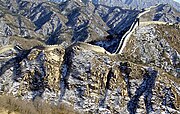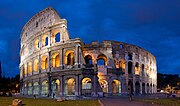Tourism
Tourism is travel for predominantly recreational or leisure purposes or the provision of services to support this leisure travel. The World Tourism Organization defines tourists as people who "travel to and stay in places outside their usual environment for not more than one consecutive year for leisure, business and other purposes not related to the exercise of an activity remunerated from within the place visited". Tourism has become a popular global leisure activity. In 2006, there were over 846 million international tourist arrivals.
Tourism is vital for many countries such as Egypt, Thailand and many island nations such as Fiji, due to the large intake of money for businesses with their goods and services and the opportunity for employment in the service industries associated with tourism. These service industries include transportation services such as cruise ships and taxis, accommodation such as hotels and entertainment venues.
History
Wealthy people have always traveled to distant parts of the world to see great buildings or other works of art, to learn new languages, to experience new cultures, or to taste new cuisine. As long ago as the time of the Roman Republic places such as Baiae were popular coastal resorts for the rich.
The history of European tourism can perhaps be said to originate with the medieval pilgrimage. Although undertaken primarily for religious reasons, the pilgrims in the Canterbury Tales quite clearly saw the experience as a kind of holiday (the term itself being derived from the 'holy day' and its associated leisure activities). Pilgrimages created a variety of tourist aspects that still exist - bringing back souvenirs, obtaining credit with foreign banks (in medieval times utilizing international networks established by Jews and Lombards), and making use of space available on existing forms of transport (such as the use of medieval English wine ships bound for Vigo by pilgrims to Santiago de Compostela). Pilgrimages are still important in modern tourism - such as to Lourdes or Knock in Ireland. But there are secular equivalents - Graceland and the grave of Jim Morrison in Père Lachaise Cemetery.
During the 17th century, it became fashionable in England to undertake a Grand Tour. The sons of the nobility and gentry were sent upon an extended tour of Europe as an educational experience. The 18th century was the golden age of the Grand Tour, and many of the fashionable visitors were painted at Rome by Pompeo Batoni. A modern equivalent of the Grand Tour is the phenomenon of the backpacker, although cultural holidays, such as those offered by Swan Hellenic, are also important.
Health tourism
Health tourism has long existed, but it was not until the eighteenth century that it became important. In England, it was associated with spas, places with supposedly health-giving mineral waters, treating diseases from gout to liver disorders and bronchitis. The most popular resorts were Bath, Cheltenham, Buxton, Harrogate, and Tunbridge Wells. Visits to take 'the waters' also allowed the visitors to attend balls and other entertainments. Continental Spas such as Carlsbad (Karlovy Vary) attracted many fashionable travellers by the nineteenth century.
Creative tourism
Creative tourism has existed as a form of cultural tourism since the early beginnings of tourism itself. Its European roots date back to the time of the Grand Tour, which saw the sons of aristocratic families traveling for the purpose of (mostly interactive) educational experiences. More recently, creative tourism has been given its own name by Crispin Raymond and Greg Richards, who as a member of the Association for Tourism and Leisure Education (ATLAS) has directed a number of projects for the European Commission, including cultural tourism, crafts tourism or sustainable tourism. They have defined "creative tourism" as tourism related to the active participation of travelers in the culture of the host community, through interactive workshops and informal learning experiences.
 |









